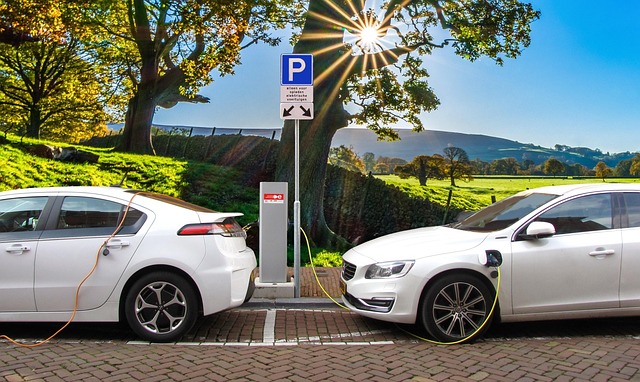Looking to register your car in California? This comprehensive guide walks you through the entire process, from understanding eligibility requirements to securing your license plate. We cover essential steps like gathering necessary documents, visiting your local DMV, and completing a DMV VIN verifier for accurate vehicle identification. By following these clear instructions, you’ll be on your way to smooth car registration in no time.
- Understand Eligibility Requirements for Car Registration
- Gather Necessary Documents for Car Registration
- Visit Your Local DMV to Register Your Vehicle
- Perform VIN Verification: Steps and Importance
- Pay Registration Fees and Receive Your License Plate
Understand Eligibility Requirements for Car Registration

Before you begin the registration process, it’s crucial to understand if your vehicle qualifies for registration in California. The Department of Motor Vehicles (DMV) has specific eligibility requirements that must be met before a car can be registered within the state. One key step is ensuring the vehicle has a valid and accurate Vehicle Identification Number (VIN). You can verify this through a reliable mobile vin verification service or an official DMV vin verifier.
Additionally, your vehicle must be in safe operating condition, have all necessary safety features installed, and comply with emissions standards. It’s also important to gather essential documents, such as proof of ownership, liability insurance, and identification, to streamline the registration process at your local DMV office or through their online services.
Gather Necessary Documents for Car Registration

Before heading to the California DMV (Department of Motor Vehicles) to register your car, make sure you have all the required documents. This process is streamlined for convenience and accuracy. Gather the following essentials: your vehicle’s registration certificate from the previous state, proof of insurance, a valid driver’s license, and the Vehicle Identification Number (VIN) verification report obtained from a certified VIN verifier. The DMV recommends using official online services or a mobile VIN inspection for this step to ensure the authenticity of your car’s history.
Additionally, have a complete set of maintenance records and any applicable emissions test results ready. These documents not only facilitate the registration process but also showcase your vehicle’s care and condition. Using a mobile VIN verification service can provide you with a detailed vehicle history report, making it easier to navigate the registration procedure at the DMV.
Visit Your Local DMV to Register Your Vehicle

Visit Your Local DMV to Register Your Vehicle
The first step in registering your car in California is to head down to your local Department of Motor Vehicles (DMV) office. This is where you’ll complete the necessary paperwork and undergo a series of verification processes, including a vehicle identification number (VIN) check. The DMV will require key documents such as proof of ownership, insurance, and identification before they can process your registration.
While at the DMV, you may opt for a traditional VIN inspection by their staff or choose to use a mobile VIN verifier for added convenience. A mobile VIN inspection service allows you to verify your vehicle’s history right from your parking spot, saving you time and effort. This digital solution checks against various databases to ensure your car’s VIN is accurate and free from any discrepancies, which is crucial for proper registration and safety considerations.
Perform VIN Verification: Steps and Importance

Before you begin the registration process, it’s crucial to have your vehicle’s Vehicle Identification Number (VIN) verified. This step is essential as it ensures that the car you’re registering matches the information on record with the DMV. To perform a VIN verification, you can either visit a local DMV office or utilize a mobile vin verifier service, which offers a convenient mobile vin inspection. The process typically involves entering your VIN into an official database to cross-reference it against manufacturer records and historical data.
By doing so, the system can detect any discrepancies, such as a car that has been reported stolen, has outstanding loans or leases, or has undergone unauthorized modifications. Accurate VIN information is vital for ensuring vehicle safety, preventing fraud, and maintaining secure ownership records. If any issues are found during the verification process, you’ll be notified before proceeding with registration, allowing you to address them promptly.
Pay Registration Fees and Receive Your License Plate

After confirming your vehicle’s eligibility for registration and providing necessary documentation, it’s time to pay the registration fees. The California DMV offers several payment methods, typically including cash, credit card, or debit card. Once the transaction is complete, you’ll receive your registration documents and a unique Vehicle Identification Number (VIN) verifier code. This code, along with your VIN, ensures the authenticity of your vehicle’s identification during the registration process.
With your new information in hand, you’re ready to claim your license plate. The DMV will provide you with physical plates that correspond to your vehicle’s details and unique VIN. Ensure a precise vin inspection by matching the provided code against the one on your vehicle’s documentation. This step safeguards against registration errors and ensures your car is legally recognized on California’s roads, facilitating smoother interactions with law enforcement and other regulatory bodies.
Registering a car in California is a straightforward process that requires understanding eligibility, gathering essential documents, and visiting your local DMV. Following the steps outlined in this article, including performing a VIN verification using a trusted dmv vin verifier, ensures compliance with state regulations. By completing these tasks efficiently, you’ll be on the road in no time, legally and securely enjoying your new vehicle.
